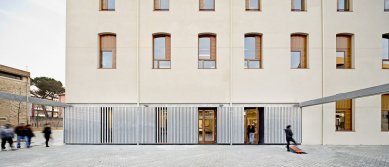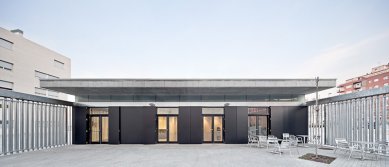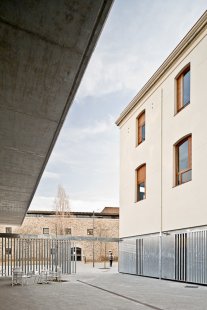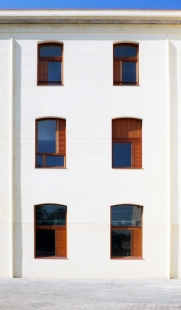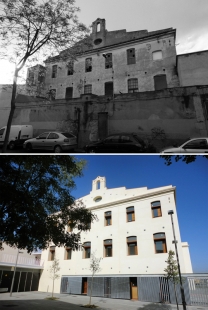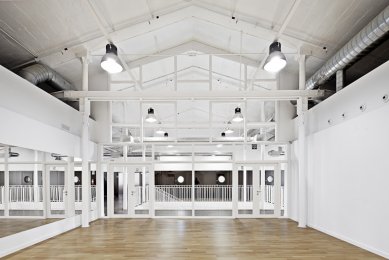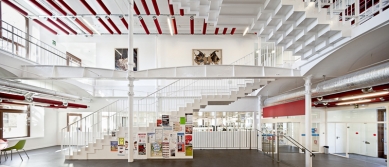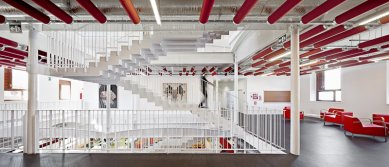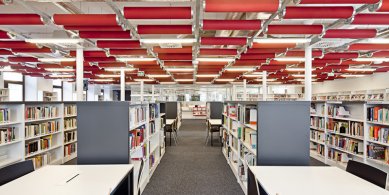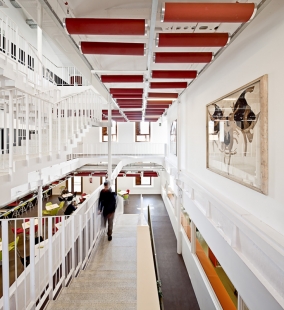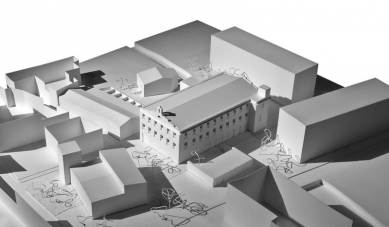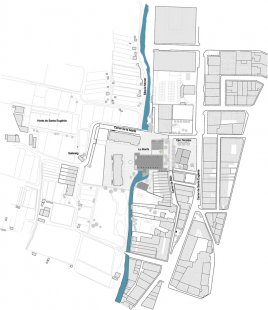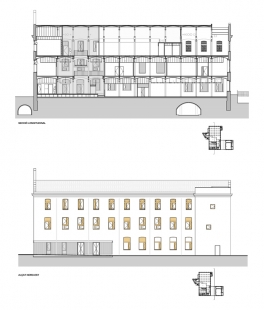
Marfa Factory

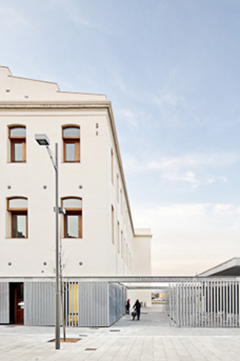 |
The historical value of the building lies not only in its preserved mass form and volume but also in the valuable and preserved structural steel skeleton of the building with originally shaped exposed steel beams. The strong character of the existing building's presence inspired the architects from the Ravetllat Ribas studio to carry out a neutral intervention of the contemporary era, adding functions and adapting the complex for current needs. The complex was supplemented with a newly conceived ground floor, which would connect the existing structure with its extension for ground-level activities in the created multifunctional space. The thematic spirit of the complex is found in the reconstructed original building, where an exhibition of industrial heritage is to be installed along with a daily center, library, and café with a newly designed conference room space, with a connecting area of a semi-public courtyard created between them.
The calm presence of the façade of the original building is complemented by a geometric play of wooden window fillings in contrast with the homogeneous ring of vertical surrounding slats of the ground floor. This project has a visual parallel in the Kulturpark Košice project by the Slovak studio zerozero, which is a pleasant finding.
The English translation is powered by AI tool. Switch to Czech to view the original text source.
0 comments
add comment





